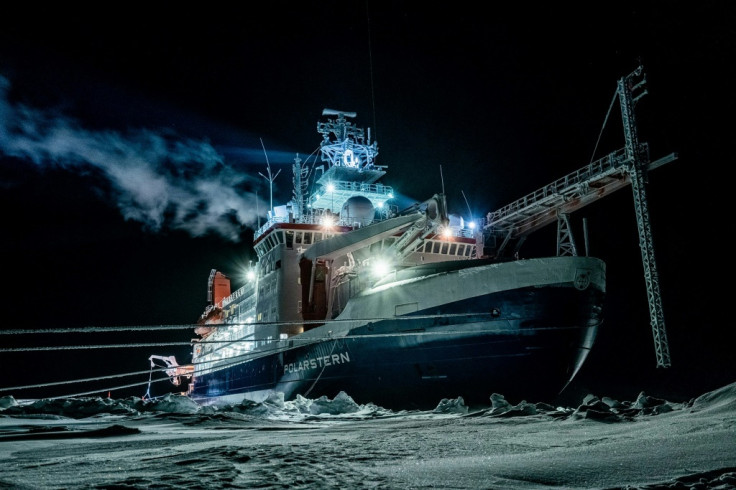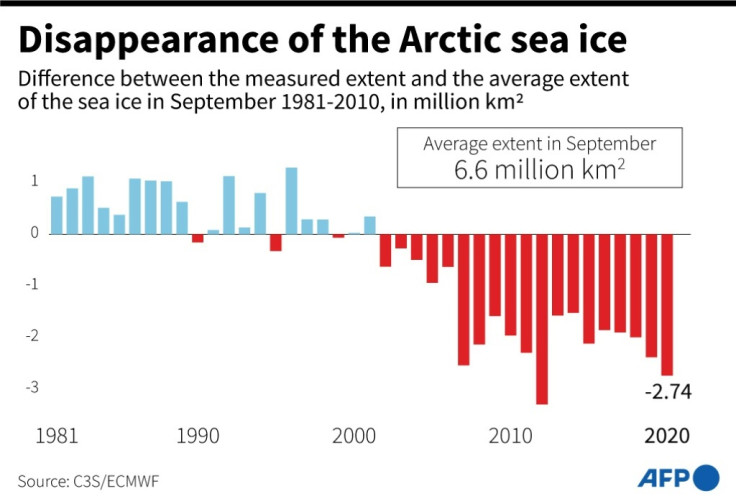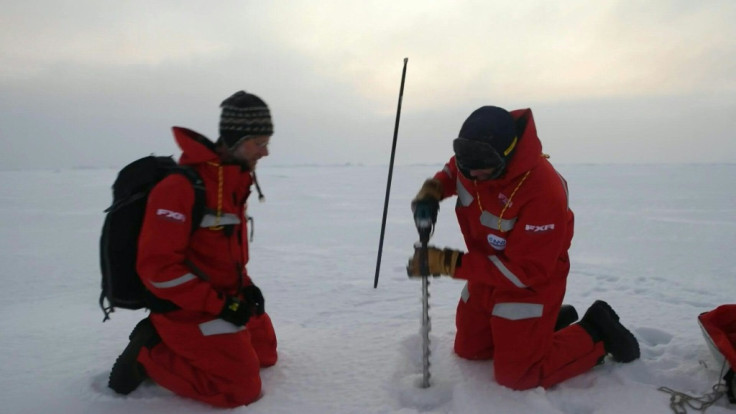Biggest North Pole mission returns from 'dying Arctic'
Scientists have gathered vital information on the effects of global warming in the region.
Researchers on the world's biggest mission to the North Pole will return to dock on Monday, bringing home devastating proof of a dying Arctic Ocean and warnings of ice-free summers in just decades.
The German Alfred Wegener Institute's Polarstern ship is set to return to the port of Bremerhaven after 389 days spent drifting through the Arctic trapped in ice, allowing scientists to gather vital information on the effects of global warming in the region.
The team of several hundred scientists from 20 countries have seen for themselves the dramatic effects of global warming on ice in the region, considered "the epicentre of climate change", according to mission leader Markus Rex.

"We witnessed how the Arctic ocean is dying," Rex told AFP. "We saw this process right outside our windows, or when we walked on the brittle ice."
Underlining how much of the sea ice has melted away, Rex said the mission was able to sail through large patches of open water, "sometimes stretching as far as the horizon".
"At the North Pole itself, we found badly eroded, melted, thin and brittle ice."

If the warming trend in the North Pole continues, then in a few decades we will have "an ice-free Arctic in the summer", Rex said.
The researchers' observations have been backed up by US satellite images showing that in 2020, sea ice in the Arctic reached its second-lowest summer minimum on record, after 2012.

The Polarstern mission, dubbed MOSAIC, spent over a year collecting data on the atmosphere, ocean, sea ice and ecosystems to help assess the impact of climate change on the region and the world.
To carry out the research, four observational sites were set up on the sea ice in a radius of up to 40 kilometres around the ship.
The researchers collected water samples from beneath the ice during the polar night to study plant plankton and bacteria and better understand how the marine ecosystem functions under extreme conditions.
The 140-million-euro ($165 million) expedition is also bringing back 150 terabytes of data and more than 1,000 ice samples.

"The expedition will, of course, produce results on many different levels," Rex said.
The team measured more than 100 parameters almost continuously throughout the year and are hoping the information will provide a "breakthrough in understanding the Arctic and climate system", he said.
Analysing the data will take up to two years, with the aim of developing models to help predict what heatwaves, heavy rains or storms could look like in 20, 50 or 100 years' time.
Since the ship departed from Tromso, Norway, on September 20, 2019, the crew have seen long months of complete darkness, temperatures as low as -39.5 Celsius (-39.1 Fahrenheit) -- and around 20 polar bears.
The mission was almost derailed by the coronavirus pandemic in the spring, with the crew stranded at the North Pole for two months.
A multinational team of scientists was due to fly in as part of a scheduled relay to relieve those who had already spent several months on the ice, but the plan had to be redrawn when flights were cancelled across the world as governments scrambled to halt the spread of the coronavirus.
During the course of the expedition, a rotating crew of 300 researchers spent time on board the German ship as it travelled with the ice along a wind-driven route known as the transpolar drift.
Radiance Calmer, a researcher at the University of Colorado who was on board the Polarstern from June to September, told AFP that stepping out onto the ice was a "magical" moment.
"If you concentrate, you can feel it moving," she said.
The ship's cook, Sven Schneider, did not underestimate the importance of his role in the mission.
"It was my job to maintain the morale of 100 people living in total darkness," he said in an interview with German weekly newspaper Die Zeit.
Copyright AFP. All rights reserved.
This article is copyrighted by International Business Times, the business news leader





















